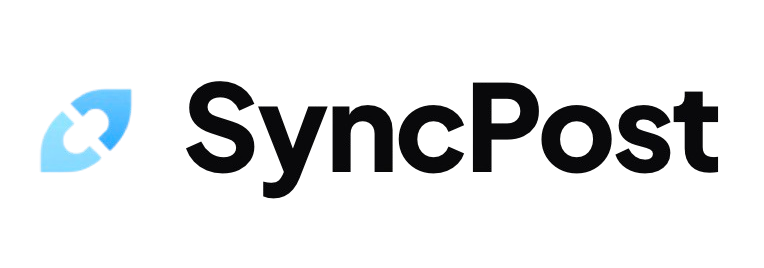
Understanding Cross Platform Posting
Cross-platform posting means sharing the same content across different social media networks at once. This practice has grown from the early days of copying and pasting posts manually to today's smart tools that help you post everywhere with a single click.
As a content creator or social media manager, you can't afford to ignore cross-platform posting anymore. Your audience is spread across multiple platforms, from Instagram to LinkedIn, and they expect to see your content wherever they spend their time.
Managing multiple social media accounts takes a lot of work, but cross-platform posting makes it much easier. You'll save hours each week by creating content once and sharing it everywhere automatically. Your message stays consistent across all platforms, which helps build a stronger brand. Plus, you'll reach more people since your content appears on multiple networks, increasing the chances of engagement and growing your following.
The Challenge of Platform Diversity
Each social media platform comes with its own set of rules and features that make it unique. Instagram puts photos and short videos front and center, while Twitter thrives on quick, text-based updates. TikTok has made vertical short-form videos the star of the show, and LinkedIn keeps things professional with industry insights and career-focused content.
Your audience behaves differently on each of these platforms, and understanding these patterns is key to your success. People scrolling through Instagram are often in discovery mode, looking for visual inspiration and entertainment. On LinkedIn, the same people might be seeking professional advice or industry news.
Creating content that fits each platform while maintaining your brand voice can feel like speaking multiple languages at once. You need different image sizes, video lengths, and writing styles for each platform. Our recommendation is to check out this comprehensive guide on platform-specific strategies to help you adapt your content effectively for each social network.

Balancing Content Consistency and Platform Uniqueness
Your brand voice is like your personality - it should stay recognizable no matter where you show up. When you post on different platforms, people should still know it's you talking to them.
Each social platform has its own unwritten rules about what works best. You can keep your core message while tweaking how you say it. For example, your LinkedIn posts might be more professional, while your TikTok content can be more casual and fun.
Here's what works in real life: Netflix uses the same witty tone across platforms but adjusts its delivery. On Twitter, they post short, snappy jokes about their shows. On Instagram, they share behind-the-scenes content with the same humor but in a more visual way.
Psychological Impact on Audience Engagement
Your followers can tell when you're simply copying and pasting the same content across different social media platforms. This behavior often leads to reduced trust and engagement, as audiences expect content that feels native to each platform they use.
Different platforms create different expectations in your audience's minds. For instance, your Instagram followers might engage more with visual storytelling and behind-the-scenes content, while your LinkedIn connections respond better to professional insights and industry updates.
You can maintain authentic connections by adapting your message for each platform while keeping your core message consistent. Focus on understanding the unique culture of each platform and adjust your tone accordingly. Remember to respond to comments and engage with your audience in ways that feel natural to that specific platform's community.
Automation Tools for Efficient Distribution
Managing multiple social media accounts can be time-consuming, but automation tools make it easier to share your content across different platforms. Tools like SyncPost help you post content on multiple platforms without switching between tabs or apps.
When looking for a cross-posting tool, these features matter most:
-
Scheduling capabilities to plan your posts ahead
-
Analytics tracking to measure post performance
-
Custom formatting for each platform
-
API reliability to ensure your posts go through
-
Queue management to organize your content
Your choice of automation tool should match your specific posting needs and budget. For example, if you mainly post between X (Twitter) and Bluesky, SyncPost offers specialized features for these platforms. Consider starting with a free trial to test if the tool fits your workflow before committing to a paid plan.

Technical Optimization Strategies
When sharing content on social media, you need specific image and video formats for each platform. Facebook prefers 1200x630 pixels for link images, while Instagram works best with square 1080x1080 pixel images. For videos, keep file sizes under 4GB for Facebook and under 100MB for Twitter to prevent upload issues.
The best time to post varies by platform and your audience's location. Post on Facebook between 1-3 PM during weekdays when office workers take lunch breaks. Instagram users are most active in the evenings from 6-9 PM, which gives you a better chance of engagement.
Setting up proper analytics tracking helps you measure success across platforms. Use UTM parameters in your links to track which posts bring traffic to your website. Facebook Pixel and Instagram Insights give you data about engagement, while Google Analytics shows you how social visitors behave on your site.
Implementation Best Practices
Starting your cross-platform posting strategy doesn't have to be complicated. Pick your main social media channel first, and master it before expanding to others. Create a simple content template that you can adjust for each platform.
A content calendar is your best friend for staying organized. You can start with a basic spreadsheet that includes post dates, platform-specific content versions, and image requirements.
Using scheduling tools helps you maintain consistent posting times across platforms. Remember to leave room in your calendar for last-minute content opportunities.
Watch out for copying the exact same content across all platforms. Each social media platform has its own style, so adjust your message accordingly.
One common mistake is posting at the wrong times for different time zones. Schedule your posts when your audience is most active on each platform.
Don't spread yourself too thin by trying to be on every platform at once. Focus on quality content for fewer platforms rather than mediocre content everywhere.
Future of Cross Platform Content Distribution
Social media platforms are getting better at working together. You can now share Instagram stories directly to Facebook, and platforms like Buffer let you post to multiple networks at once. These improvements make it easier for you to reach more people without extra work.
New tools using smart automation are changing how content moves between platforms. You'll soon be able to customize your posts automatically for each platform's specific format and rules. These tools will help you save time while keeping your content looking great everywhere you share it.
Start planning your cross-platform strategy by picking 2-3 main platforms where your audience spends the most time. You should focus on creating content that works well across these platforms, rather than trying to be everywhere at once. Our recommendation is to start small, test what works, and gradually expand your presence as you get comfortable with managing multiple platforms.
